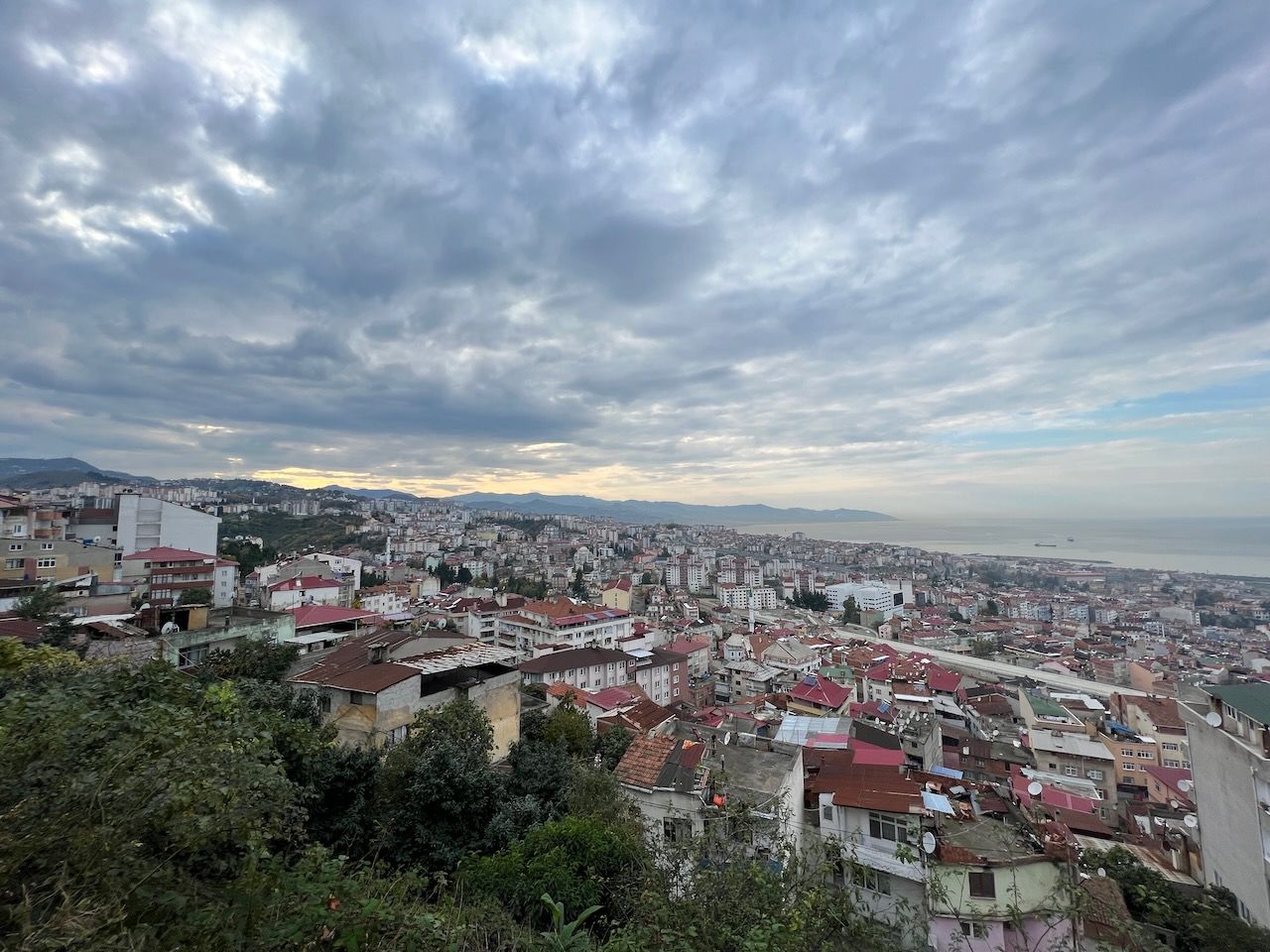Remote recovery

In the aftermath of the bombing, I found myself flying to Trabzon, in the far northeastern corner of Türkiye. It sits on the shores of the Black Sea, within sneezing distance from the Caucasus. You might still be asking yourself where that is (it’s okay, the world knows Americans are bad at geography). Here’s a map of its location.
The longer I’m on the road, the more I realize how special the random places are. I enjoy visiting the big cities and the smaller but known locations. But I’ve found that I love getting off the beaten path and discovering little-known or rarely talked about places.
Trabzon definitely fits that bill. I know this because pretty much everyone asks me where it is. Even the locals themselves were definitely wondering why I was there. I won't lie, the only reason I know about it is that they have a football club that regularly plays in the Champions League.
What I found was a city with a rich and predictably overlooked history. There was a time when the empire of Trebizond was one of the most important stops along the Silk Road.
The most impressive symbol of this once mighty empire was the Hagia Sophia of Trabzon. Much like its more famous cousin in Istanbul, it was originally a Byzantine church that turned into a mosque when the Ottomans arrived. Yet its smaller scale allowed me to get closer to the details of that transformation. I was mesmerized by its colorful and detailed murals, many of which had been defaced by Trabzon’s new occupiers.
I also encountered some of the kindest and friendliest people on my travels thus far. Smiles were traded like baseball cards, along with handshakes and many offers to join for çay (tea, pronounced “chai”).
The pace of life in Trabzon was vibrant yet relaxed. This mellowness provided me the opportunity to slow down and process what I had witnessedjust days before. It was serendipitously the perfect location for the healing I needed to undertake, much like Santiago de Compostela back in April.
The Pontic mountains rise dramatically from the Black Sea and the city is crushed between them. Its streets run up the many small valleys between the ascending ridges of the mountains. This provided the opportunity to see the city from multiple angles and I took full advantage.
I sat on the black sand beaches, where crashing waves provided a sonic backdrop for my thoughts to matriculate. Why was I so near the attack? Why was I spared? How should I feel about it? Was it a warning or a blessing? These and many other questions followed me around as I navigated Trabzon.
On my last evening, I hiked up Boztepe hill, which overlooks the city. As I watched the sun descend through the dusty haze and disappear behind the Pontics, I reflected on my days here in Trabzon. I noted how this place and its people had been showing and telling me I was on the right path, with great regularity. They reminded me that there is overwhelmingly more love and kindness in this world than not.
I thought about the unknown. I realized we all have a choice when faced with uncertainty. We can fear it or we can embrace it. It was a reminder of the many internal conversations I had had with myself before I began this journey, and how I had chosen to seek out the unknown. Those choices lead me to this unknown (to me) city in this unknown (to me) corner of the world. For this, I am eternally grateful.
Trabzon just might be the most random place I’ve visited on this adventure. I will always cherish it for helping me heal. Yet, its true impact will be encouraging me to continue to seek out these lesser-known locations. This is where I thrive.